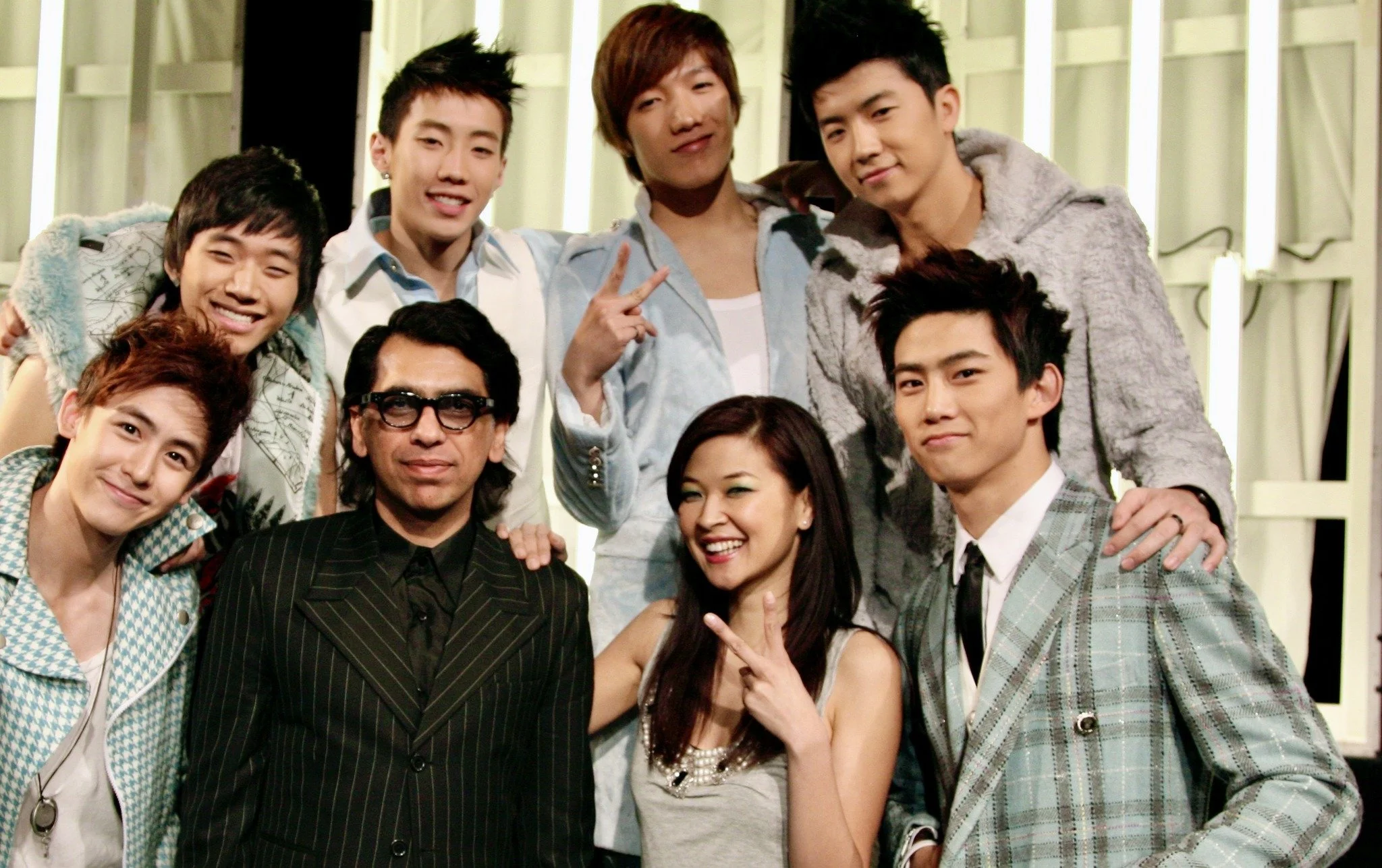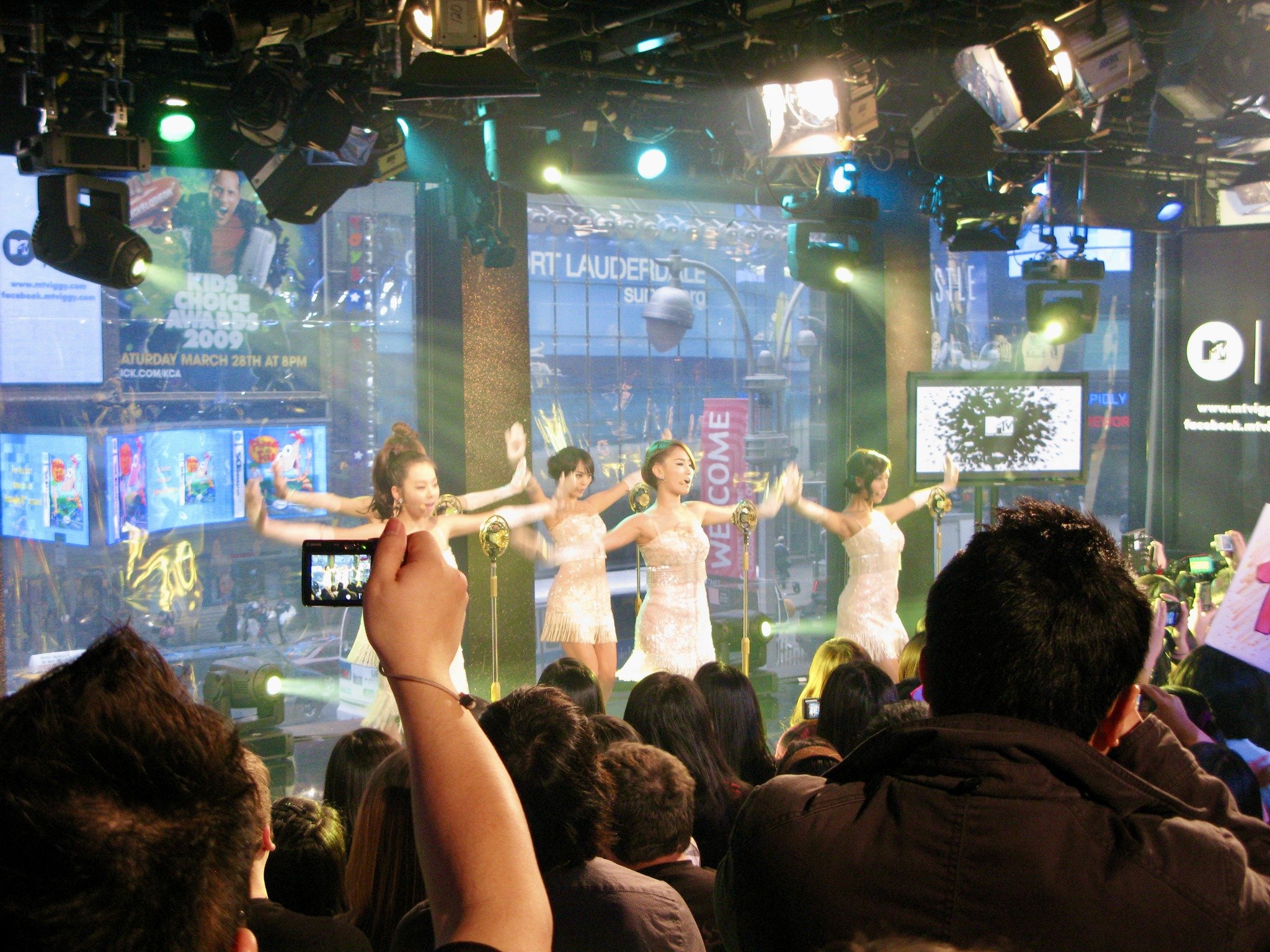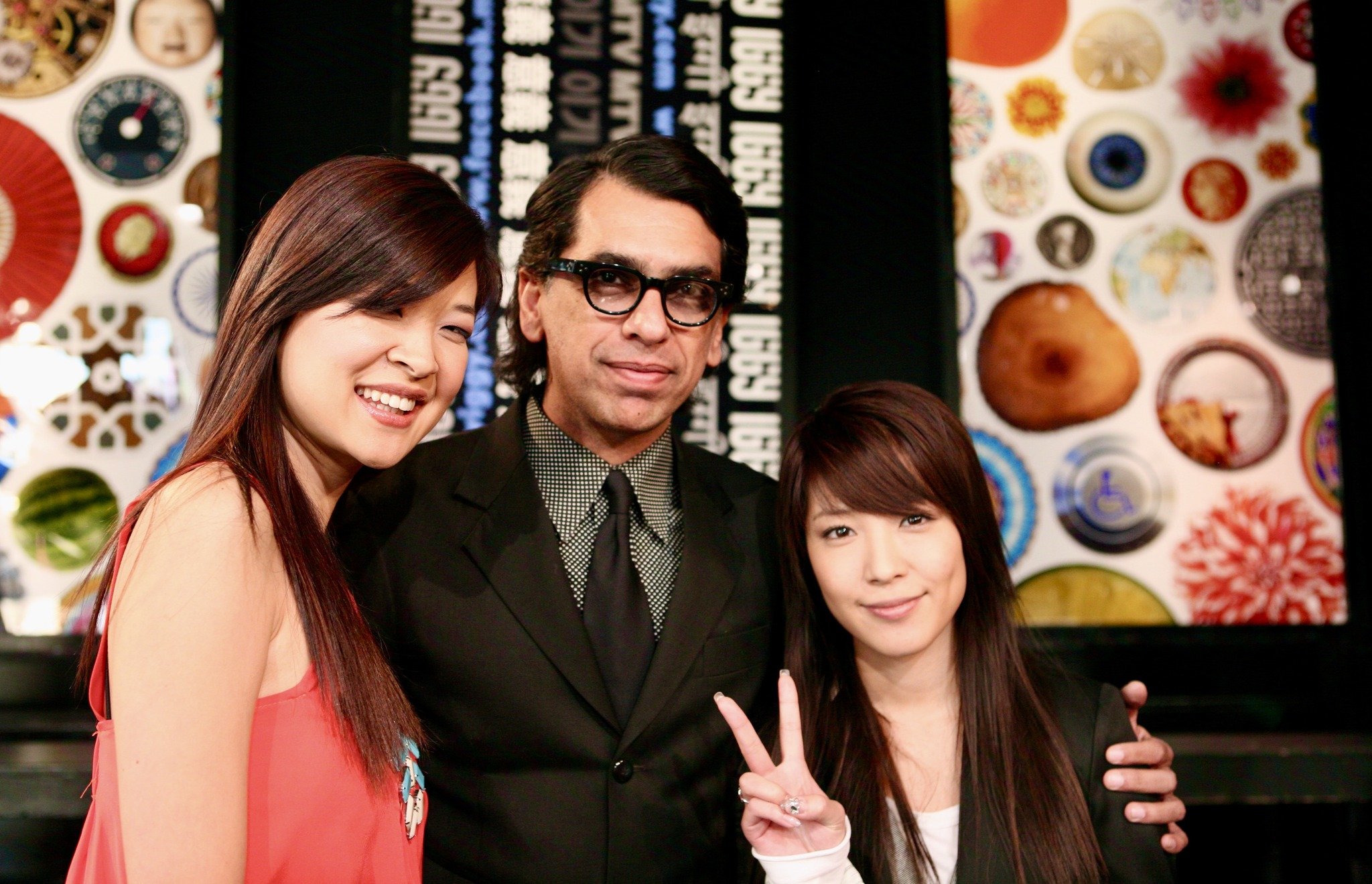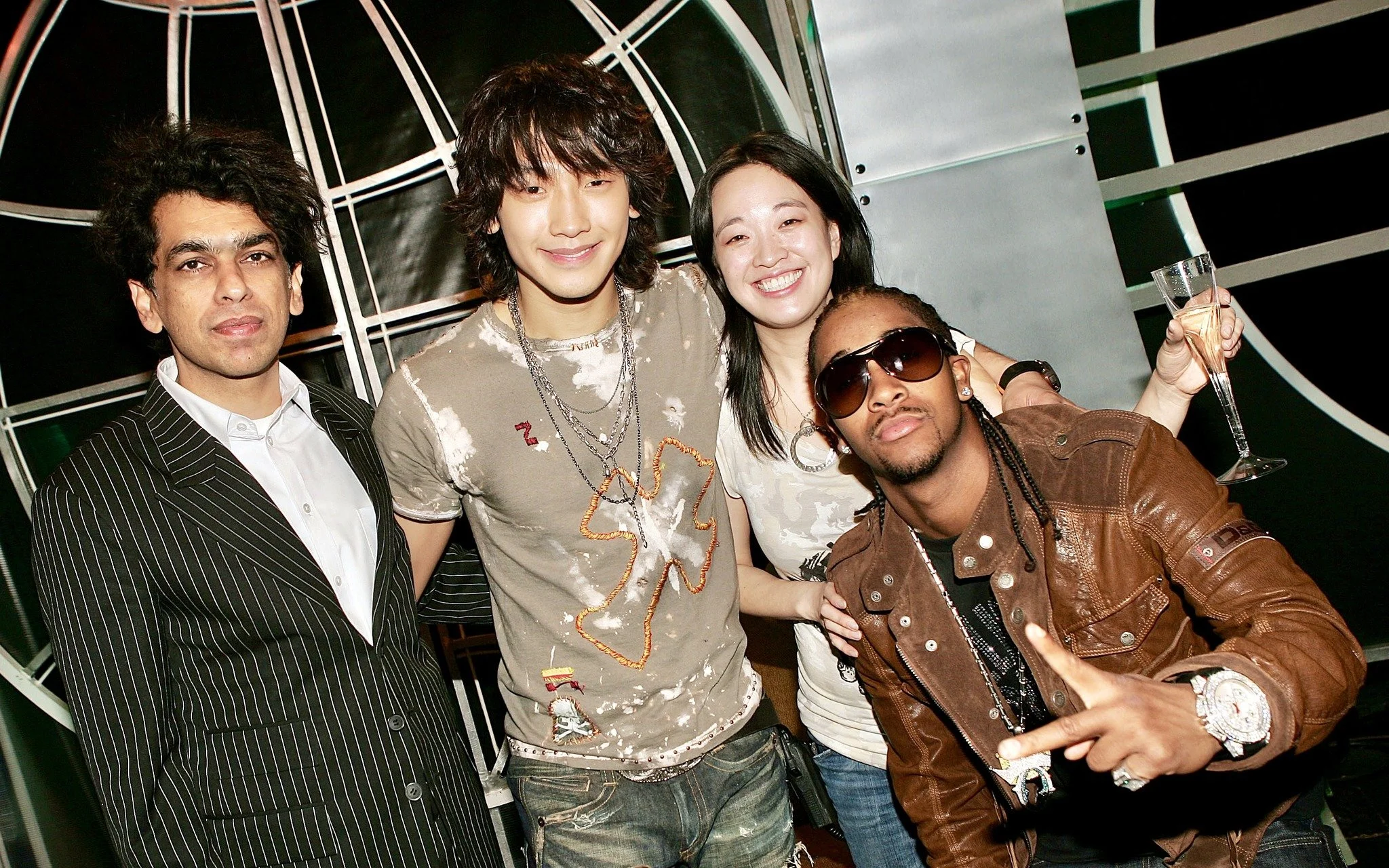The Forgotten History of MTV’s Role in Bringing K-Pop to the USA
MTV K introduced K-Pop to mainstream American audiences
There was recently a Billboard article about the timeline of the K-Pop explosion in the U.S. The article mentions that MTV K, a channel launched by MTV in 2005 (17 years ago!), was the first in the country to program the genre that now produces the biggest pop stars on the planet- this is true but inadequate information.
Unfortunately, the complete and fascinating story of how MTV brought K-Pop to the U.S. is largely untold. The pioneering work of my team at MTV World in introducing K-Pop but also Desi, Asian, LatAm, Middle Eastern, Icelandic, Afro, Norwegian heavy metal, Scandinavian electronica, and all kinds of mind-bending music and storytelling from the world needs a deep dive.
We reversed the one-way export of American pop culture that was MTV’s music programming strategy until then and gave the brand a new shine. It's a rich story intertwined with the globalization of pop culture and the vital role MTV and my team played in it.
The MTV World division was developed by the brilliant SVP of business development, Tony Dunaif, myself, and his team, including Joseph Varet and Morgan Hertzan, who established the business case. MTV announced our intentions in 2004 with me as its General Manager. Our goal was to bring global pop culture to the West, cross-pollinate music and give voice to unheard audiences. This was before social media consumed us. YouTube had just launched, and Facebook was a year old. There was no Tik-Tok, Instagram, or Spotify and MTV was still cool and the primary source of music discovery. We created culture then, not follow it.
K-Pop is one of the most influential genres we brought to stateside. We anticipated that megastars like BTS would be borne out of it and cross-over. Then, MTV had visionary leadership that took risks and inspired its audience. In 2005, TRL was off the air, and our Times Square studio was no longer the Mecca of teenagers flocking to see Britney Spears and Justin Timberlake. The sweet, hysterical sound of thousands of screaming girls that inspired our work had faded into silence.
MTV World kicked off by launching three new channels to connect with bi-cultural young Asians and showcase their music: MTV Desi for South Asian Americans, MTV Chi for Chinese Americans, and MTV K for Korean Americans. The media and audiences received the division’s plans with excitement and fanfare. Eventually, we were to launch seven channels for underserved niche audiences in the U.S., and a global pop culture brand.
K-Pop was already hot in Asia, and I had been following the phenomenon. I watched several early bands like g.o.d, Kangta, and Shingwa at the MTV Asia Awards, as well on our channel in South Korea. Their professionalism, precision, and passion they aroused fascinated me.
The genre was fresh and electric. I visited Seoul to strategize with our colleagues on how to bring K-Pop to the USA in a substantial manner. We met the leading labels of the time including SM, YG, and JYP Entertainment, to persuade them to cooperate. They were excited but also skeptical about MTV USA’s commitment to the genre as well as the fact that an Indian-born executive (me) was heading the initiative, and I had insisted that Tinnie Chow, my Chinese-Canadian colleague, (who was handling programming) was with me in the negotiations. (We were still in hiring mode and had only a couple of Korean-speaking team members.) The K-Pop industry then, and still is, male-dominated. Eventually, convinced of our bold intentions, the labels agreed to support the project enthusiastically.
There were doubters within MTV as well. Not all our executives, especially in the international teams, were sold on the idea of “global pop music.” Some viewed the world as geographically distinct “international” markets with little cross-pollination. They could target other countries with mostly American content, with the occasional, light customized programming thrown into our local channels. Social media, broadband, travel, and geopolitics would force us to rethink this notion.
Others in the industry had built businesses around the arrogance that Western artists, especially from big labels, were meant to be the dominant force in pop culture, and music from developing countries was relegated to the unsexy “world music” genre. (Burna Boy would have had a hard time being programmed on the main MTV channel back then.) In their reading, these artists were too “ethnic” for mainstream western audiences. (This anachronistic idea is still shockingly prevalent in many industries.)
Also, there had not been a serious effort to successfully break a pop act from outside the West. It was assumed a band had to sing in English to cross over. PSY and his “Gangnam Style” blockbuster were six years away. J-Hope from BTS was twelve-years old. Often, when requesting airplay for an act from Asia or Latam, I was asked if the artist sang in English, to which my answer usually was, “Does Lady Gaga sing in Japanese in Tokyo?”
While we were preparing our K-Pop channel, Rain, already a star in Asia, performed at Madison Square Garden in NYC in January 2006. The concert was sold-out, covered by the New York Times, and gave us a preview of the genre’s potential. On June 27th 2006, we launched MTV K, our Korean-focused channel. We had asked fans to vote for the first video on the channel and Boa’s big hit “My Name” was given the honor.
Boa’s “My Name” was voted the first video on MTV’s K-Pop channel
Soon, we started inviting Hallyu megastars like Rain and Boa to the MTV Studio, tapping into a fanatical audience. Thousands of young people of all colors, many with their amused parents in tow, lined up for hours, creating havoc in Times Square for a glimpse of idols they never imagined seeing on MTV. When Rain came to MTV, the ever-hip Judy McGrath, then Chairman of Viacom, canceled a meeting to dance like a teenager at the taping. Senior Viacom execs, who had never heard of K-Pop, were startled by these massive waves of passion.
The Wonder Girls, 2 PM, JYP, Beast, B.A.P, 4Minute, TVXQ, Girls Generation, and Se7en brought fantastic dance routines, otherworldly beauty, and overjoyed stans to 1515 Broadway. Suchin Pak, MTV’s star VJ, herself an early inspiration to Asian Americans, often hosted these shows. Jin Young Park, CEO of JYP Entertainment hung out at the studios, as did various executives from other K-Pop labels.
Not only did we bring K-Pop stateside we went deeper and featured alternative pop music from South Korea like rockabilly (yes there is such a thing,) electronica, and Korean country as part of our B-Sides program for emerging music from around the world.
B-Sides- Rock Tigers, Rockabilly from S.Korea.
In 2011, MTV World’s recently launched global pop culture brand, MTV Iggy, produced the brand’s first-ever global, online sweepstakes called the “Best New Band in the World.” Within the first few hours, our servers crashed because of the volume of votes we received for artists like Yuna, Atif Aslam, Gyptian, Far East Movement, Skrillex, and La Vida Boheme. But the winner by far was K-Pop’s wildly popular girl group, 2NE1, who had recently released their first album “To Anyone.”
We flew the girls to New York for their first-ever live appearance in the U.S. to headline the “Best New Band in the World” concert in Times Square. The multi-stage concert caused pandemonium in mid-town New York City, as thousands of fans waited in line, many overnight, to see bands from around the world on MTV. My office was besieged with calls from friends and CEOs requesting a ticket so a besotted daughter or niece could see 2NE1. The band received a thunderous response and the concert was live-streamed on digital billboards in Times Square. It was a seminal moment for the K-Pop and global pop music. Although not well covered by the mainstream media who were still ambiguous about the genre, it was the first time a large American MTV audience experienced the power of pop culture originating in distant lands.
It might have been on that night senior executives at MTV, our advertising teams, and partners understood the forces we were unleashing and the new opportunities they brought. MTV World was also one of the first to connect American brands to global pop music in the U.S. We created “Cover the World” a music-based program featuring the Wonder Girls, Gyptian, and others to launch a new General Motors model. Intel came on board for "The Music Experiment," a bespoke, multi-year live music franchise powered by fans on social media, and featuring artists like Taeyang, Santigold, The Jezebels, Of Monsters and Men, Arcade Fire, Disclosure and many others.
It can be argued that MTV World triggered the mainstreaming of K-Pop, Bollywood, South Asian artists, Desi pop, Nigerian hip-hop, etc. in the USA. If MTV had truly embraced the globalization of pop culture catalyzed by social media and started pivoting to the new ecosystem these seismic changes would bring, it might still be relevant. The division provided a trailer of what was to come as early as 2005 with its edgier, hipper programming and a scintillating array of otherworldly trends that youth were hungry for.
In those days, we didn't just have employees. Early MTV World staff like Tinnie Chow, John Shim, SuChin Pak, Nadia Rush, Riad Saha, and many others were pop culture evangelists who wanted to see their rich cultures recognized and help launch a new generation of artists. We took our cues from Tom Freston and Judy Mcgrath, the founders, and icons of MTV. Like them, we are in the business of magic-making, not just money-making.
Fortunately, there is still a lot of magic left undiscovered.
미국에서 잊혀진 K팝의 역사
최근 빌보드 기사가 미국에서 K-Pop 폭발의 타임라인에 관한 기사가 있었는데 기사에서 MTV가 2005년(17년 전!)에 런칭한 채널인 MTV K가 미국에서 처음으로 K-Pop 장르를 프로그램했다고 언급했습니다. 이제 지구상에서 가장 큰 팝 스타를 생산합니다. 이것은 사실이지만 부적절한 정보입니다.
불행히도 MTV가 K-Pop을 미국에 가져온 방법에 대한 완전하고 매혹적인 이야기는 거의 알려지지 않았습니다. MTV World에서 우리 팀의 선구적인 작업은 K-Pop뿐만 아니라 Desi, Asian, LatAm, Middle Eastern, 아이슬란드어, Afro, Norwegian Heavy Metal, Scandinavian electronica, 그리고 세계에서 필요로 하는 모든 종류의 마음을 사로잡는 음악과 스토리텔링을 소개합니다. 깊은 잠수.
MTV의 음악 편성 전략이었던 미국 대중문화의 일방적인 수출을 뒤집고 브랜드에 새로운 빛을 불어넣었습니다. 그것은 대중 문화의 세계화와 MTV와 우리 팀이 하는 중요한 역할과 얽힌 풍부한 이야기입니다.
MTV World 부서는 비즈니스 개발의 뛰어난 SVP인 Tony Dunaif와 저, 그리고 비즈니스 사례를 수립한 Joseph Variety와 Morgan Hertzan을 포함한 그의 팀과 함께 개발되었습니다. MTV는 2004년에 저를 총괄 매니저로 두고 우리의 계획을 발표했습니다. 우리의 의도는 글로벌 대중 문화를 서구에 가져오고, 음악을 교차 수분시키며, 들어보지 못한 청중에게 목소리를 내는 것이었습니다. 이것은 소셜 미디어가 우리를 소비하기 전이었습니다. 유튜브는 막 출범했고 페이스북은 1년이 되었습니다. Tik-Tok, Instagram 또는 Spotify가 없었고 MTV는 여전히 멋지고 음악 발견의 주요 소스였습니다. 우리는 문화를 창조한 것이지 그것을 따르지 않았습니다.
K-Pop은 우리가 미국에 가져온 가장 영향력 있는 장르 중 하나입니다. 방탄소년단과 같은 메가스타들이 이를 짊어지고 크로스오버할 것이라고 예상했다. 그런 다음 MTV는 위험을 감수하고 청중에게 영감을 주는 선구적인 리더십을 가지고 있었습니다. 2005년에 TRL은 방송을 중단했고 우리의 Times Square 스튜디오는 더 이상 Britney Spears와 Justin Timberlake를 보기 위해 몰려드는 십대들의 메카가 아니었습니다. 우리 작업에 영감을 주었던 수천 명의 비명을 지르는 소녀들의 감미롭고 히스테리적인 소리는 침묵 속으로 사라졌습니다.
MTV World는 2개 문화를 가진 젊은 아시아인과 연결하고 그들의 음악을 선보일 수 있는 세 개의 새로운 채널을 시작하여 남아시아계 미국인을 위한 MTV Desi, 중국계 미국인을 위한 MTV Chi, 한국계 미국인을 위한 MTV K를 시작했습니다. 언론과 관객들은 사단의 기획을 설렘과 열광으로 받아들였다. 결국 우리는 미국에서 소외된 틈새 관객을 위한 7개의 채널과 글로벌 대중 문화 브랜드를 런칭하게 되었습니다.
K-Pop은 이미 아시아에서 핫했고, 나는 그 현상을 쫓고 있었다. 저는 MTV Asia Awards와 한국 채널에서 g.o.d, Kangta, Shinwa와 같은 초기 밴드를 보았습니다. 그들의 전문성, 정확성, 열정이 저를 매료시켰습니다.
장르는 신선하고 일렉트로닉했다. 어떻게 하면 K-Pop을 미국에 실질적으로 가져올 수 있을지 동료들과 전략을 짜기 위해 서울을 방문했습니다. SM, YG, JYP 엔터테인먼트 등 당대 최고의 레이블을 모두 만나 협력을 설득했다. 그들은 MTV USA의 장르에 대한 헌신과 인도 태생의 임원(나)이 주도하고 있다는 사실에 흥분했지만 동시에 회의적이었습니다. 저는 중국계 캐나다인 동료인 Tinnie Chow가 프로그래밍) 협상에 나와 함께했습니다. (우리는 여전히 고용 모드에 있었고 한국어를 구사하는 팀원이 몇 명 밖에 없었습니다.) K-Pop 산업은 당시에도 여전히 남성 중심적이었습니다. 결국 우리의 과감한 의도를 확신한 레이블은 프로젝트를 열성적으로 지원하기로 동의했습니다.
MTV 내부에도 회의론자들이 있었다. 특히 국제 팀의 모든 임원이 "글로벌 팝 뮤직"이라는 아이디어에 매진된 것은 아닙니다. 일부는 세계를 교차 수분이 거의 없는 지리적으로 정의된 "국제" 시장으로 보았습니다. 주로 미국 콘텐츠로 다른 국가를 타겟팅할 수 있으며, 가끔 우리 지역 채널에 가벼운 맞춤형 프로그램을 제공할 수 있습니다. 소셜 미디어, 광대역, 여행 및 지정학은 이 개념을 재고하도록 강요할 것입니다.
업계의 다른 사람들은 서구 아티스트, 특히 대형 레이블의 아티스트가 대중 문화에서 지배적인 힘을 의미하고 개발 도상국의 음악이 섹시하지 않은 "월드 뮤직" 장르로 강등된다는 오만함을 바탕으로 비즈니스를 구축했습니다. (Burna Boy는 주요 MTV 채널에서 프로그램되는 데 어려움을 겪었을 것입니다.) 그들의 독서에서 이 예술가들은 주류 서구 관객에게 너무 "민족적"인 것으로 추정됩니다. (이 시대착오적인 아이디어는 여전히 많은 산업 분야에서 충격적으로 만연해 있습니다.)
또한, 서구 외부의 대중 음악을 성공적으로 깨뜨리려는 진지한 노력도 없었습니다. 밴드가 건너기 위해 영어로 노래해야 한다고 가정했습니다. 싸이와 그의 '강남스타일' 블록버스터는 6년 전의 일이다. 방탄소년단의 제이홉은 열두 살이었다. 종종 아시아나 라틴 아메리카에서 공연을 요청할 때 아티스트가 영어로 노래를 부르느냐는 질문을 받았고 보통 “레이디 가가는 도쿄에서 일본어로 노래를 부르나요?”라고 대답했습니다.
우리가 K-Pop 채널을 준비하는 동안 이미 아시아의 스타인 Rain은 2006년 1월 NYC의 Madison Square Garden에서 공연했습니다. 콘서트는 매진되어 New York Times에 의해 다루어졌으며 장르의 가능성. 2006년 6월 27일, 우리는 한국 중심 채널인 MTV K를 시작했습니다. 채널의 첫 번째 영상에 팬들에게 투표를 부탁했고, 보아의 히트곡 '마이 네임'이 영예를 안았다.
곧, 우리는 열광적이고 헌신적인 청중을 활용하여 비와 보아와 같은 한류 메가스타를 MTV 스튜디오에 초대하기 시작했습니다. 다양한 색상의 수천 명의 젊은이들이 즐거운 시간을 보내는 부모와 함께 몇 시간 동안 줄을 서서 MTV에서 본 적이 없는 아이돌을 보기 위해 타임 스퀘어에서 혼란을 야기했습니다. 비가 MTV에 왔을 때, Viacom의 회장인 Judy McGrath는 테이프에서 십대처럼 춤을 추기 위해 회의를 취소했습니다. K-Pop에 대해 들어본 적이 없는 Viacom의 고위 경영진은 이 엄청난 열정의 물결에 놀랐습니다.
Wonder Girls, 2 PM, JYP, Beast, B.A.P, 4Minute, 동방신기, 소녀시대, Se7en은 환상적인 댄스 루틴, 초현실적인 아름다움, 1515 Broadway에 유쾌한 스탠스를 가져왔습니다. MTV의 스타 VJ인 수친 박은 아시아계 미국인에게 초기 영감을 주었고 종종 이러한 쇼를 진행했습니다. JY 엔터테인먼트의 대표인 박진영과 다른 K-Pop 레이블의 다양한 임원들도 스튜디오에서 시간을 보냈습니다.
우리는 K-Pop을 미국으로 가져왔을 뿐만 아니라 더 깊이 들어가 로커빌리(예, 그런 것이 있습니다) 일렉트로니카, 그리고 한국의 얼터너티브 팝 음악을 전 세계의 신흥 음악을 위한 B-Sides 프로그램의 일환으로 선보였습니다. 세계.
2011년, MTV World가 최근 런칭한 글로벌 대중 문화 브랜드 MTV Iggy는 브랜드 최초의 글로벌 온라인 경품 행사인 "Best New Band in the World"를 제작했습니다. 처음 몇 시간 내에 Yuna, Atif Aslam, Gyptian, Far East Movement, Skrillex 및 La Vida Boheme와 같은 아티스트에 대한 투표로 인해 서버가 다운되었습니다. 그러나 단연 우승자는 K-Pop의 대인기 걸그룹 2NE1으로 최근 첫 번째 앨범 'To Any'를 발매했다.
우리는 타임 스퀘어에서 열린 "Best New Band in the World" 콘서트의 헤드라인을 장식하기 위해 미국 최초의 라이브 공연을 위해 소녀들을 뉴욕으로 데려갔습니다. 다단계 콘서트는 MTV에서 전 세계의 밴드를 보기 위해 수천 명의 팬들이 밤새도록 줄을 서서 기다리면서 뉴욕 미드타운에서 대혼란을 일으켰습니다. 내 사무실은 친구와 CEO들로부터 티켓을 요청하는 전화로 포위되어 2NE1을 볼 수 있는 티켓을 요청했습니다. 밴드는 폭발적인 반응을 얻었고 콘서트는 타임 스퀘어의 디지털 광고판에서 생중계되었습니다. K-Pop과 글로벌 팝 음악의 결정적 순간이었다. 장르에 대해 여전히 모호한 주류 미디어에 의해 잘 다루어지지는 않았지만 많은 미국 MTV 시청자가 먼 나라에서 시작된 대중 문화의 힘을 경험한 것은 처음이었습니다.
MTV의 고위 임원, 광고 팀 및 파트너는 우리가 발휘하는 힘과 그것이 가져온 새로운 기회를 이해했을 것입니다. MTV World는 또한 미국 브랜드를 미국에서 글로벌 대중 음악과 연결하는 최초의 회사 중 하나였습니다. 우리는 새로운 General Motors 모델을 출시하기 위해 Wonder Girls, Gyptian 및 기타 사람들이 출연하는 음악 기반 프로그램인 "Cover World"를 만들었습니다. Intel은 소셜 미디어 팬들이 제공하는 맞춤형 다년 라이브 음악 프랜차이즈인 "The Music Experiment"에 참여했으며 태양, Santigold, The Jezebels, Of Monsters and Men, Arcade Fire, Disclosure 및 기타 여러 아티스트가 참여했습니다. .
MTV World는 미국에서 K-Pop, Bollywood, 남아시아 아티스트, Desi pop, Nigerian 힙합 등의 주류화를 촉발했다고 주장할 수 있다. MTV가 소셜 미디어에 의해 촉진된 대중 문화의 세계화를 진정으로 수용하고 이러한 엄청난 변화가 가져올 새로운 생태계로 선회하기 시작했다면 여전히 관련성이 있을 수 있습니다. 이 부서는 2005년 초에 더 날렵하고 힙한 프로그래밍과 젊은이들이 갈망하던 초현실적인 트렌드의 예고편을 제공했습니다.
그 당시에는 직원만 있는 것이 아니었습니다. Tinnie Chow, John Shim, SuChin Pak, Nadia Rush, Riad Saha 등과 같은 초기 MTV World 직원은 자신의 풍부한 문화가 인정받는 것을 보고 새로운 세대의 예술가를 런칭하는 데 도움이 되기를 원하는 대중 문화 전도사였습니다. 우리는 MTV의 창립자이자 아이콘인 Tom Freston과 Judy Mcgrath에게서 힌트를 얻었습니다. 그들처럼 우리도 단순히 돈을 버는 것이 아니라 마술을 부리는 사업을 하고 있습니다.
다행히도 아직 발견되지 않은 마법이 많이 남아 있습니다.







